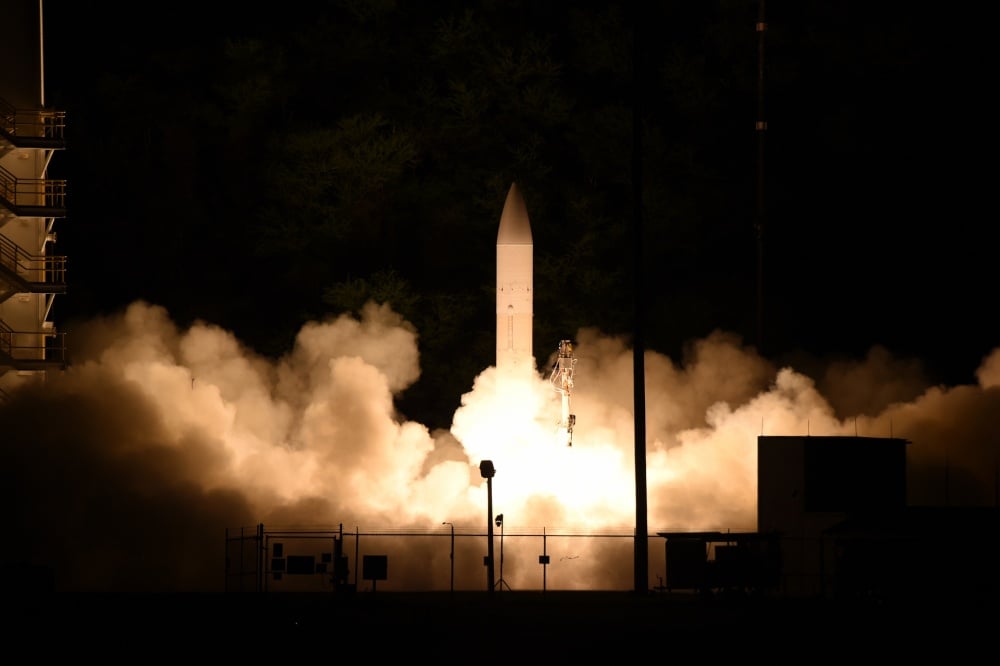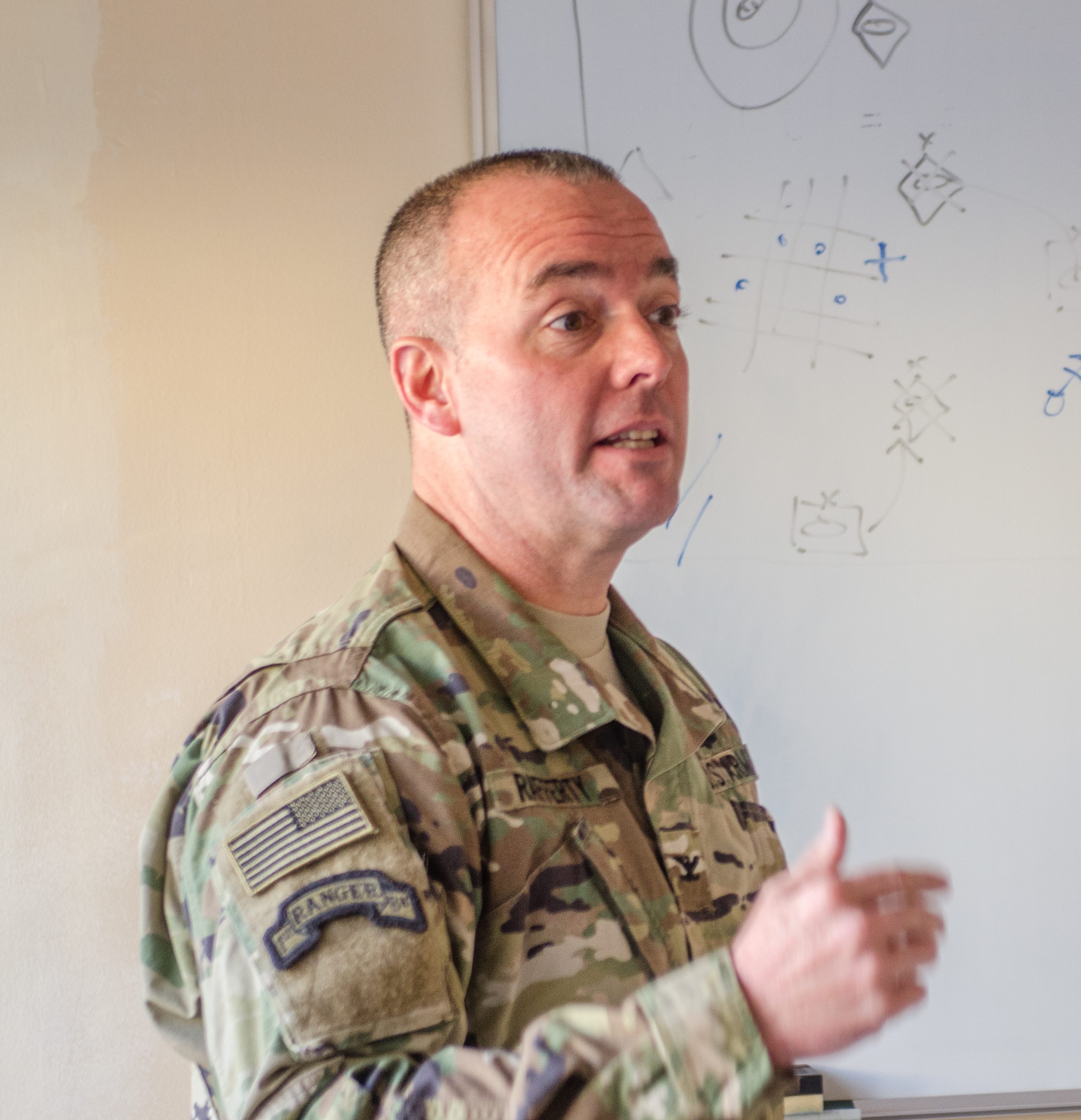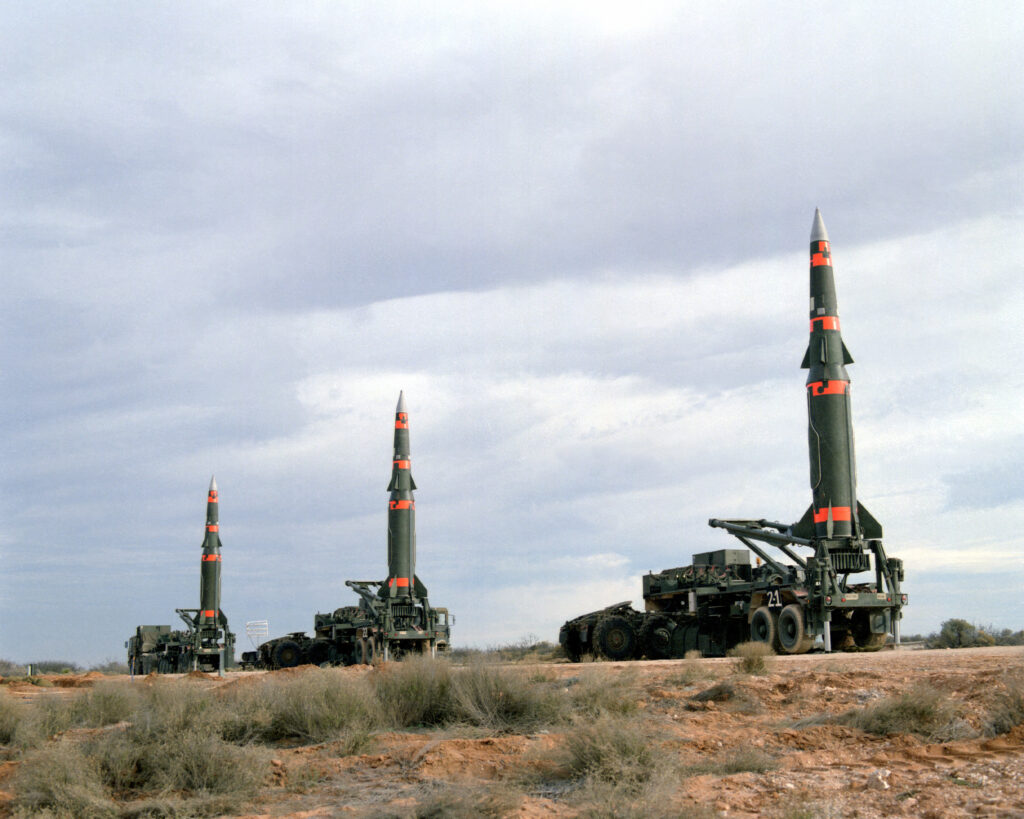By SYDNEY J. FREEDBERG JR.
 WASHINGTON: “The services are unified by the pacing threat,” Army Brig. Gen. John Rafferty told me, dismissing reports of service rivalries over land-based missiles.
WASHINGTON: “The services are unified by the pacing threat,” Army Brig. Gen. John Rafferty told me, dismissing reports of service rivalries over land-based missiles.
Last week, retired Air Force three-star Dave Deptula denounced the Army’s drive to develop long-range missiles as “ridiculous,” a costly and redundant bid for a mission that he said aircraft do much better. This week, the Army officer overseeing those missile programs, Brig. Gen. Rafferty, reached out to Breaking Defense to offer a rebuttal.
Army Futures Command’s director of Long Range Precision Fires said he doesn’t see the “infighting between services over roles and missions” described in a recent Breaking Defense article. To the contrary, Rafferty’s team is looking for new ways to “work together, from a command & control and a targeting standpoint, with the Navy and the Air Force,” he said. “That’s coming in our experimentation, [which] really begins to pick up speed in the fall and into in ’21 and ’22.”
Russia and China are investing heavily in layered anti-aircraft and anti-ship defenses – known as Anti-Access/Area Denial – and
“We need a comprehensive approach to take this down,” Rafferty said. “The whole is greater than the sum of its parts.” That means a mix of subsonic, supersonic, and hypersonic weapons, land-based and air-dropped and submarine-launched, manned and unmanned, all striking the enemy from different ranges, altitudes, launch sites, and speeds.
Army-operated land-based missiles, especially with the new radar-seeking sensors now in testing, can target enemy radars, command posts, and surface-to-surface missile launchers. If the Army missiles get shot down, well, at least nobody died. If they strike home, the resulting damage to enemy air defenses will reduce the risk to the other services’ pilots. Having that option adds a lot to the joint effort, Rafferty said, for a relatively modest cost.

Then-Col. John Rafferty teaches field artillery operations in Tajikistan.
“We’re not investing enormous force structure up front into these things,” said Rafferty. Of the Long-Range Precision Fires projects that the Army is pursuing, Extended Range Cannon Artillery is upgrading existing Paladin howitzers; the Precision Strike Missile will be fired by existing Army rocket launchers (HIMARS and MLRS); the Long-Range Hypersonic Weapon will enter service as a single battery of four launcher trucks and eight prototype missiles in 2023; and the Strategic Long-Range Cannon is still experimental.
“We’re pretty modest in our goals for quantities,” he said, “recognizing [both] cost [and] the effect that can be gained by a small unit of these — in the context of a joint force, not in and of themselves.”
Deptula vs. Artillery
Deptula “mischaracterizes” the situation between the services,” Rafferty said. “There’s always going to be competition for resources, but I don’t think this one is about roles and missions.”
The Army is not trying to challenge the division of labor laid down at the famous 1948 meeting in Key West, Fla. between the chiefs of the Army, Navy and the newly-independent Air Force. There’s plenty of precedent within that framework for the Army to have surface-launched missiles that can fire one thousand miles or more, Rafferty said.
“I don’t think we need to go back to Key West, although I wouldn’t mind a trip there to discuss it,” Rafferty told me. “The Army had the Pershing missile during our lifetimes, and it played a key role in great-power competition.”
Back in the 1980s, the competition was against the Soviet Union, and it was dominated by nuclear weapons like the Pershing II. These days, the military competition with Russia, China, and co. is driven largely by advances in long-range precision-guided weapons, the satellite and airborne sensors that find targets for them, and the computer networks that pass data from “sensor to shooter.”

US Army Pershing II ballistic missiles, later banned by the 1987 INF Treaty.
The Pentagon wants to build a unified mega-network for Joint All Domain Command & Control (JADC2) that can link any sensor to any shooter across land, sea, air, space, and cyberspace. But the current reality is that each service has its own networks – often, multiple networks – that often connect only via one-off technical kludges or cumbersome manual work-arounds.
All the services are “unified by the idea that we have to improve our sensor to shooter timelines in order to fight and win in the future, and that’s proving to be a pretty powerful shared motivation,” Rafferty said. “For years we have been exploring — I refer to them sometimes as trick shots: lots of little sensor to shooter exercises that explore different ways that we can do things more quickly.”
“We can do this,” Rafferty said. The challenge is scaling up from “trick shots” to a large-scale war. There’s already a worldwide system of satellite and aerial surveillance – largely created by the Air Force – that the Army just needs to tap into, he said, rather than expensively recreate.
But why buy new Army land-based missiles when we already have thousands of Air Force, Navy, and Marine Corps strike planes, plus Tomahawk cruise missiles launched by Navy surface warships and submarines?
An Army HIMARS launcher fires Lockheed’s prototype Precision Strike Missile for the first time in December, 2019.
Army Advantages
At the most basic level, Army artillery units do things differently from naval vessels or air squadrons, so they add another problem for an enemy to solve. In some cases, land-based missiles have advantages over air- or sea-launched ones.
Concealability is one such. While aircraft and even surface warships can be designed with stealth features to hide from radar, they’re never invisible, and there’s nothing at sea or in the air to hide behind. Airbases, meanwhile, are notoriously large and static targets. But for artillery units, camouflage can be as cheap and simple as slapping on a coat of green paint, erecting some netting with tree branches on top, or driving into a tunnel. Indeed, as North Korea has shown, a wheeled missile launcher under a mountain is even harder to find than a submarine under the ocean. (Of course the enemy has to roll that artillery into the open to use it.)
The US and its allies, for all their surveillance technology, struggled to find Saddam’s SCUD missile launchers in 1991 and 2003, Rafferty notes. And that was in the open desert, not the more varied terrain of Eastern Europe or Pacific islands. Even the largest artillery systems the Army is developing, the semitrailer-mounted Long-Range Hypersonic Weapon and the Strategic Long-Range Cannon supergun, will still be small enough to conceal, he said.
Range is another. While most military aircraft can refuel in mid-air, extending flight indefinitely, the fuel tankers are lumbering and unstealthy aircraft too vulnerable to fly close to Russian or Chinese-style air defenses. Without refueling, the Air Force’s handful of strategic bombers can still fly thousands of miles, but the vast majority of US strike aircraft are fighters – F-15s, F-16s, F-18s, and the new stealthy F-35s – with ranges in the hundreds of miles. The Army expects both the LRHW missile and the SLRC supergun – whose shells are rocket-propelled and precision-guided – to hit targets over a thousand miles away. Sure, an enemy like Russia or China can still shoot back at such ranges, but they have far fewer (and more expensive) options for thousand-mile shots than for shooting down US aircraft heading towards their territory.
A third potential advantage is complexity. It’s much simpler to launch a missile off the back of a truck than from an aircraft, surface ship, or submarine, and that can make land-based systems cheaper and quicker to develop. The Army’s prototype hypersonic missile, for instance, is set to enter service a year before the Navy integrates their version of the same design into submarine launch tubes, while air-launched weapons seem even further out.
“[With] the surface to surface variant of a hypersonic system.. the Army can get there fastest [and] buy time for the other services to develop similar capabilities,” Rafferty said. “It is somewhat of a race, but not in between the services. The race is against a pacing threat… This is a great power competition.”
No comments:
Post a Comment